Estadio Banorte (Estadio Azteca)
| Capacity | 83 264 |
|---|---|
| Country | Mexico |
| City | Mexico City |
| Clubs | Club América |
| Other names | Estadio Guillermo Cañedo |
| Nicknames | Coloso de Santa Úrsula |
| Inauguration | 29/05/1966 |
| Construction | 08/1962 – 1967 |
| Record attendance | 132,274 (Julio César Chávez – Greg Haugen, boxing, 20/02/1993) |
| Design | Pedro Ramírez Vázquez, Rafael Mijares Alcérreca |
| Address | Calzada de Tlalpan 3465, Santa Úrsula Coapa, Coyoacán, 04650 Ciudad de México |
Advertisement
Estadio Banorte – stadium description
What is Estadio Azteca like in a nutshell?
Estadio Azteca is the largest and most important stadium in Mexico, de facto serving as the national stadium, although it is in private hands. The stadium was inaugurated in 1966 and has not changed significantly since its creation. During its construction, mammoth remains were encountered, and after its opening it was able to survive earthquakes and had a hand in popularizing the so-called “Mexican wave”.
The facility used to be able to accommodate more than 100,000 spectators, but after changes in 2016 the capacity was reduced to about 83,000, which still allows it to be counted among the largest football stadiums in the world. Thanks to its high capacity, attendance records for various sports competitions have often been broken at Estadio Azteca.
Although a number of clubs have played host at Estadio Azteca, the only permanent host from the very beginning until today is Club América. In addition, the Mexican national team also plays here regularly. The facility has had the opportunity to host an extraordinary number of major international events, which has given it global recognition and makes it one of the most famous stadiums in the world.
Its greatest fame came with the two World Cups held in Mexico in 1970 and 1986, with the Estadio Azteca hosting, among others, the opening matches and finals. The World Cup was won here by Pelé and Maradona, two football players considered among the greatest of their time. In particular, Diego Maradona's exploits at the packed Estadio Azteca and his “Hand of God” and “Goal of the Century” have gone down in the annals of football history.
In 2026, the World Cup will be hosted by Mexico, the United States and Canada. The Estadio Azteca will host the World Cup matches for the third time, although this time the grand final is to be held elsewhere.
In 2025, one of Mexico's largest banks, Banorte, became the stadium's title sponsor, and the facility was given the commercial name Estadio Banorte.
How did the Estadio Azteca come to be?
In 1956, Mexico hosted the Pan-American football championship. The tournament's matches were played in the country's largest stadium, the Estadio Olímpico Universitario, but even so, tickets were in short supply for many fans, and it was decided to broadcast the matches on television.
The success of the competition caught the attention of Emilio Azcárraga Milmo, son of Emilio Azcárraga Vidaurreta, owner of the Telesistema Mexicano (later Televisa) television network. Azcárraga saw the potential in football and decided to invest in it, and in 1959 he became the owner of Club América, the most popular football club in the Mexican capital.
In early 1961 Azcárraga recruited Guillermo Cañedo de la Bárcena as president of Club América (since 1960 he also served as president of the Mexican Football Federation). Under Cañedo's influence, Azcárraga decided to build a new stadium for Club América (which until then had played at Estadio Olímpico Universitario).
The new stadium was to become one of the largest in the world and, in the process, was also to help Mexico receive the hosting of the World Cup. Making such a huge investment, however, required partners, so Azcárraga joined forces with the owners of the Atlante and Necaxa clubs, which were to become co-hosts of the new venue.
The company Fútbol del Distrito Federal, S.A de C.V. was thus created to handle the investment. Azcárraga became its president.
Who designed the Estadio Azteca?
An architectural competition was held to build the stadium. Three bids were submitted, by architects Pedro Ramírez Vázquez (together with Rafael Mijares Alcérreca), Félix Candela and Enrique de la Mora.
Enrique de la Mora's design was rejected earliest, and the winning concept was that of Pedro Ramírez Vázquez, whose main advantage over Félix Candela's vision was the lack of supports to hold up the roof from the inside. The jury's decision was announced on July 3, 1961.
In the original version of the design, the stadium was to be more rectangular, with stands stretching parallel along the end lines of the pitch and rounded only at the corners. Later, however, it was decided to go for a more oval, contoured variant, intended to provide the best possible view from every seat in the stadium.
How was the site for Estadio Azteca acquired?
The selection of the site for the stadium was also an important consideration. Of the many locations within the capital's metropolitan area, the choice fell on a plot of land located in Santa Úrsula, 16 kilometers south of the city center.
The plot had the advantage of a low price and relatively good transport links to the center. As it later turned out, it also had numerous disadvantages, such as high groundwater levels and rocky ground that was a remnant of the Xitle volcano eruption.
The landowner kept a section of the plot for himself, which later turned out to be very important, as the main esplanade in front of the stadium was to be located there. When it was realized that the area would be in great demand, efforts were made to buy it, but the owner was aware of its commercial potential and refused to sell.
At that time, the authorities, headed by Federal District Department Regent (de facto mayor of Mexico City) Ernesto P. Uruchurtu, stepped in and expropriated the land, as well as evicted the more than 3,000 people living there and demolished existing buildings. The controversial decision to expropriate and evict led to protests that later influenced Uruchurtu to resign from his position.
Where did the name Estadio Azteca come from?
The name of the planned stadium was decided through a nationwide competition organized by the Mexican postal service. Suggestions were sent by letter, and the name that fell most often was to become the name of the stadium.
Thus, the name Estadio Azteca was adopted, referring to Mexico's Aztec heritage. The first person who sent in a proposal with this name received the right to use two seats in the stadium free of charge for 99 years.
In January 1997, Guillermo Cañedo de la Bárcena, longtime president of Club América and the Mexican Football Federation, as well as a prominent FIFA official who was instrumental in the creation of Estadio Azteca, died. Soon after Cañedo's death, the stadium's owner, Grupo Televisa, decided to name the facility after him (Estadio Guillermo Cañedo).
Despite Cañedo's undoubted merits, the name caught on poorly, with Estadio Azteca still in common use, so Grupo Televisa soon reversed its decision to give the stadium a patron.
The stadium is also colloquially known as Coloso de Santa Úrsula (Colossus of Santa Úrsula), in reference to its monumental size and the name of the neighborhood in which it is located.
When did Estadio Azteca get a commercial name?
On March 14, 2025, a partnership was announced with Banorte, one of Mexico's largest banks. In exchange for a 12-year loan of 2.1 billion pesos, which secured financing for the stadium's redevelopment ahead of the 2026 World Cup, Banorte became the title sponsor of the facility, which was renamed Estadio Banorte.
When was the Estadio Azteca built?
Construction of the Estadio Azteca was initiated in August 1962, and work began by blasting away the rocky ground that was created by the eruption of the Xitle volcano, probably around the 3rd century AD. Initial plans called for the work to be completed in November 1964, with an expected cost of less than 100 million pesos.
However, construction encountered difficulties, one of which was the high groundwater level, which prevented the digging of a basin as deep as was planned. As a result, a larger portion of the stands than anticipated had to be built using an above-ground, reinforced concrete structure, which raised the cost significantly.
Another problem was the issue of ownership of the land near the stadium where the main esplanade was to be located. The land was obtained only through forcible expropriation and eviction of residents. The design of the stadium was also changed during the project, giving it a more oval shape, which posed a greater challenge for architects and builders.
The cost of the investment eventually totaled more than 200 million pesos. A large part of this amount was covered by the sale of private boxes, which the owners bought out for a period of 99 years. During the construction of the stadium, probably 12 workers have died. Mammoth remains were also encountered during the work.
When was the Estadio Azteca inaugurated?
The grand opening of the new stadium took place on May 29, 1966. For the inauguration, Club América played a friendly against Italy's Torino FC, which ended in a 2–2 draw. Guests at the ceremony included Mexican President Gustavo Díaz Ordaz, FIFA President Stanley Rous and the presidents of the three resident clubs (Club América, Atlante and Necaxa).
The country's president decided to arrive at the ceremony by car, making him more than an hour late, which delayed the entire inauguration. When he finally arrived at the stadium, he was whistled at by an impatient crowd.
Over the next few days, a series of consecutive inaugural friendly matches were played with host clubs and invited teams from Europe (Torino FC and Valencia CF). On July 17, 1966, the stadium hosted its first major sporting event: the Copa México final (Club León Club – Deportivo Guadalajara 2–1).
At the time of its opening, the stadium did not have a roof. It still took just over a year to build it.
What upgrades has Estadio Azteca undergone?
The stadium underwent its first major modernization before the 1986 World Cup. At that time, the facility was adapted to FIFA requirements, the number of spectator seats was increased and new VIP boxes and seats for journalists were added.
Prior to the visit of Pope John Paul II in 1999, two video screens were installed in the stadium, which at the time were the largest in the world. In 2015, the screens were replaced with new ones, featuring LED technology.
In the 21st century, the stadium underwent a series of upgrades, which included renovating the locker rooms, installing new seats, increasing the number of boxes, improving the lighting and replacing the sound system. In 2016, the stadium's capacity was reduced well below 100,000 spectators, to around 83,000.
Despite the various modifications, Estadio Azteca has remained essentially unchanged since its construction and still retains its original appearance.
How will Estadio Azteca be modernized ahead of the 2026 World Cup?
Modernization of the stadium in preparation for hosting the 2026 World Cup began in mid-2024, with work expected to take about year and a half and be completed in early 2026, during which time the facility will be out of service. This is the largest upgrade Estadio Azteca has undergone to date.
The work is expected to include reorganizing parts of the boxes, rebuilding portions of the lower stands, and increasing the number of spectator seats to more than 90,000. Outside, the reinforced concrete beams and pillars will be enhanced with LED banners that will upgrade the stadium's appearance and allow for colorful choreography.
What kind of events are taking place at Estadio Azteca?
As the largest stadium in Mexico, Estadio Azteca naturally attracts a number of major events, not only sports, but also cultural or religious ones. Some of the most important events that have taken place at the stadium include the football World Cup, which was held here twice, in 1970 and 1986.
What were the most important sports events held at Estadio Azteca?
World Cup 1970
One of the main goals of Emilio Azcárraga and Guillermo Cañedo, the prime initiators of the construction of Estadio Azteca, was to bring the football World Cup to Mexico.
On October 8, 1964, at the 34th FIFA Congress in Tokyo, Mexico was chosen to host the 1970 World Cup, beating its main rival, Argentina. FIFA officials were impressed by the model of the new Estadio Azteca that Cañedo presented during the congress. The Estadio Azteca was the most important venue of the event, hosting the opening match and the final, among others.
1968 Olympic Games
Even before the 1970 World Cup took place, another huge sporting event took place in Mexico: the 1968 Olympic Games. At that time, part of the games (including the final) of the Olympic football tournament were played at Estadio Azteca.
World Cup 1986
The 1986 World Cup was originally to be hosted by Colombia, but in 1982 the country withdrew from staging the tournament because it was unable to meet the requirements for an organizer. In this situation, on May 20, 1983, Mexico was announced as the new host, becoming the first country to host the World Cup for a second time, and in relatively short order.
The main venue for the tournament was again the monumental Estadio Azteca. It is the first and so far only stadium in the world where the World Cup final has been played twice, taking into account the fact that the 1950 World Cup did not have a final, and the championship-deciding match, which took place at the Maracanã and is often referred to as the final, was de facto a last-leg group stage encounter.
World Cup 2026
On June 13, 2018, at the 68th FIFA Congress in Moscow, the joint candidacy of Mexico, the United States and Canada was selected to host the 2026 World Cup. One of the venues for this championship is to be the Estadio Azteca, for which this will be the third World Cup. Although the final is scheduled to be played elsewhere this time (at MetLife Stadium in the New York metropolitan area), Estadio Azteca is set to host the opening match for the third time.
What other football competitions involving national teams have taken place at Estadio Azteca?
In addition to the World Cup and the Olympic tournament, Estadio Azteca has hosted an extraordinary number of other major football competitions over the years, including the CONCACAF Championship (1977) and CONCACAF Gold Cup (1993, 2003), the Confederations Cup (1999), the Under-20 (1983) and Under-17 World Cup (2011), and the unofficial Women's World Cup (1971).
For most of the international football competitions whose matches were held at the Estadio Azteca, it was also the venue of the final.
In 1975, Estadio Azteca was the venue for the opening and closing ceremonies, as well as part of the football tournament matches at the VII Pan-American Games. It is interesting to note that in the final at the Estadio Azteca, in which the national teams of Mexico and Brazil played each other, there was a power failure during overtime and the match could not continue. The encounter was intended to be repeated four days later, but since the Brazilian national team had an earlier scheduled return, the gold medals were eventually awarded to both teams.
In June 1969, the national teams of El Salvador and Honduras played each other in a World Cup qualifier. Since Honduras won the first match and El Salvador was the winner of the second game, an additional match was played on a neutral ground to decide who would advance to the next round.
The game took place on June 27, 1969 at the Estadio Azteca and ended with El Salvador winning 3–2 (after extra time). These matches are considered one of the causes of the brief armed conflict between El Salvador and Honduras that occurred in July 1969 (the so-called “Football War”).
How important is the Estadio Azteca to the Mexican national team?
The stadium also serves the Mexican national team as the main venue where it usually plays its matches, making it the de facto national stadium. The national team achieved its greatest success at this facility, winning the Confederations Cup in 1999. El Tri also won the CONCACAF Championship (1977) and CONCACAF Gold Cup (1993, 2003) here.
At the 1986 World Cup, the Mexican national team won the Round of 16 match (2–0 against Bulgaria) at Estadio Azteca, the only time they ever qualified for the World Cup quarterfinals.
Which clubs play at the Estadio Azteca?
The stadium was initially hosted by three football clubs: Club América, whose owner was the main initiator of the construction of the facility, as well as Necaxa and Atlante clubs, which entered into a partnership with Club América.
Necaxa (from 1971 to 1982 as Atlético Español) left Estadio Azteca after moving to Aguascalientes in 2003. Atlante moved out as early as 1983, relocating to its former facility (Estadio de la Ciudad de los Deportes), although the club later still periodically returned to Estadio Azteca.
The facility was temporarily used by other clubs, such as Pumas UNAM and Cruz Azul. Estadio Azteca sometimes also serves Mexican teams to play matches in international competitions (even a team from distant Guadalajara used it for this purpose).
The only team that has continuously played its matches here since 1966 is Club América. It is one of the founding clubs of the Mexican league, as well as the most successful and one of the most popular football clubs in Mexico.
What club competitions are held at Estadio Azteca?
The facility has witnessed many important matches in club competitions, both at the national and international level. It has hosted the finals of domestic league and the Copa México, as well as matches for the Copa Interamericana in addition to the finals of the CONCACAF Champions Cup and Copa Libertadores, among others.
What other sports competitions are held at the Estadio Azteca?
American football
The Estadio Azteca occasionally hosts American football games featuring NFL teams. On October 2, 2005, the stadium hosted the first-ever NFL regular season game played outside the United States (San Francisco 49ers – Arizona Cardinals 14–31), which in addition set a regular season attendance record (103,467 spectators) – broken less than four years later, on September 20, 2009, on the occasion of the first NFL game at the new AT&T Stadium.
The game is considered a precursor to the later NFL International Series, a series of NFL games played outside the United States (some NFL International Series games also take place at Estadio Azteca).
Boxing
Estadio Azteca has also been the scene of prestigious boxing galas. On February 20, 1993, it hosted a bout between Mexican Julio César Chávez and American Greg Haugen (won by Chávez by technical knockout in the 5th round), with the WBC Federation junior welterweight world title at stake.
The duel gathered 132,274 spectators in the stadium, which is a world record in attendance at a boxing gala, taking into account the events for which tickets were sold – a larger audience (135,132 spectators) was gathered only by the Tony Zale vs. Billy Pryor fight on August 16, 1941 in Milwaukee, for which admission was free.
What non-sporting events take place at Estadio Azteca?
Estadio Azteca also hosts a number of non-sporting events, whether cultural, political or religious.
Concerts
The stadium has hosted many major concerts by well-known music artists. One of the first world stars to visit Estadio Azteca was Michael Jackson, who in a series of five spectacular concerts in October/November 1993, held as part of the Dangerous World Tour, gathered a total of an extraordinary 550,000 spectators.
This concert is considered a landmark, after which foreign stars began to come to Mexico with increasing frequency. Subsequently, Gloria Estefan, Luis Miguel, U2, Paul McCartney and Shakira, among others, performed at the Estadio Azteca, although none of the concerts ever again topped Michael Jackson's score in attendance.
Religious events
Huge crowds also gathered at Estadio Azteca when Pope John Paul II celebrated Mass at the stadium on January 25, 1999. The facility has also hosted Jehovah's Witness meetings and other religious events. On November 30, 2014, the public funeral of popular comedian Chespirito attracted 40,000 people to the stadium.
What kind of attendances are reported at Estadio Azteca?
As one of the largest football stadiums in the world, actively used for many prestigious competitions, Estadio Azteca has often recorded very high attendances, formerly exceeding even 100,000 spectators, which in many cases broke records of various competitions.
The stadium has achieved record numbers of spectators for matches of the Olympic football tournament, the Confederations Cup, the Under-17 World Cup, the CONCACAF Gold Cup, as well as the Copa Libertadores, Copa Sudamericana and the CONCACAF Champions Cup, among others.
The Estadio Azteca also recorded some of the highest attendances in the world for football World Cup matches, American football games and a boxing fight.
What events that took place at Estadio Azteca were particularly memorable?
The very fact that Estadio Azteca is one of the largest football stadiums in the world, located in Mexico's capital, home to the national team and one of the country's most successful and popular clubs, Club América, makes the facility extremely important to Mexican football.
However, the stadium stands out above mediocrity, and its worldwide fame was created primarily by the two World Cups that were played in 1970 and 1986. The thrilling performances, the Mexican wave and the great heroes led by Pelé and Maradona, whose legends are linked to the history of the Estadio Azteca, have been in the memory of fans for a long time.
World Cup 1970: the football icon Pelé and the Match of the Century
The 1970 World Cup was unquestionably triumphed by the Brazilian national team, which won every game at the tournament (as well as in the qualifiers preceding it). The Canarinhos with Pelé, Gérson, Carlos Alberto, Jairzinho, Rivellino or Tostão in the lineup is considered by some to be the best team of all time.
Brazil's legendary striker Pelé triumphed at this World Cup for the third time, making him the only footballer in history to do so (a feat somehow repeated later by another Brazilian, Mário Zagallo, although he won two titles as a player and one as a coach). One of the most frequently recalled images from these championships is the photo of Pelé rejoicing after winning the final at the Estadio Azteca.
Also of particular note during the 1970 World Cup was the Italy vs. West Germany semifinal match, played at the Estadio Azteca, which was later dubbed the “Match of the Century”.
The game started well for the Italians, who went into the lead as early as the 8th minute after a shot by Roberto Boninsegna. Despite a number of situations, Germany failed to equalize until the added time, when Karl-Heinz Schnellinger scored his only goal in the history of his national team appearances.
Franz Beckenbauer suffered a serious injury in the second half of the match, with his shoulder knocked out after one of the fouls. Since the Germans had already used up all the substitutions, he played on, and in the break before extra time the medics bandaged his shoulder. As many as five goals were scored in extra time, with the Italians ultimately winning 4–3.
World Cup 1986: the Mexican wave and Maradona, or Hand of God and Goal of the Century
Thanks to Colombia's withdrawal from hosting the 1986 World Cup, Mexico was given the opportunity to host the event for the second time in history and in relatively short order, and the Estadio Azteca was once again at the center of events, focusing the attention of the entire world.
The 1986 World Cup brought the popularization of a specific type of cheering, the “wave”, which appeared in Mexican stadiums, including the Estadio Azteca, as early as during the opening ceremony. Although this cheering originated earlier in the United States, it was the television broadcasts from Mexico that went around the world and popularized the wave, which is thus known in many countries as the “Mexican wave”.
The absolute star of the tournament was Diego Maradona, captain of the Argentine national team, which took the gold. The quarterfinal against England, which was a true display by Maradona, went down in history, although it was not without great controversy either.
There was a goalless draw until the break, but in the 51st minute Argentina came out on top. The goal was scored by Maradona, who preceded the English goalkeeper in the struggle for the top ball... playing with his hand. Angry Englishmen protested to the referee, but the latter did not see the hand and recognized the goal.
After the match Maradona stated that the goal was scored a little with the head and a little with the hand of God, hence the goal went down in history as “Hand of God”. It was only years later that the footballer admitted to scoring the goal with his hand, although he also justified the whole situation as a kind of revenge for the Falklands War.
While the first goal stirred up a lot of controversy, the second goal, scored four minutes later, was already a display of great mastery by the Argentine player. Maradona received the ball in his own half and, after freeing himself from the assistance of two Englishmen, headed toward the goal, passing more opponents on the way, including the goalkeeper, before heading the ball into the net.
Maradona's 68-meter rally became known as the “Goal of the Century” and is considered one of the most beautiful goals in football history. At the end of the match, Gary Lineker scored a contact goal, but the game eventually ended in a 2–1 victory for Argentina.
Although Maradona was a star before, the thrilling quarterfinal against England at the packed Estadio Azteca and Argentina's subsequent road to gold took the footballer's fame to a sky-high level and is part of the legend of the great player, who presented to the whole world at the time his unparalleled skills, but also distinguished himself with a bit of on-field cunning.
What are the characteristics of Estadio Azteca?
Estadio Azteca is a football-specific facility. Its stands are divided into two tiers, which are punctuated by a strip of balconies with boxes. The stadium is partially dug into the ground: the pitch is 9.5 meters below ground level, and the lower tier of the auditorium rests against the slopes. The spectator seats are mostly covered by a canopy, with floodlights placed on the edge of the roof.
Estadio Azteca's stands have an oval, gently contoured shape that provides comfort and optimal visibility from every position in the stadium. The stands are equipped with colorful plastic seats, with plenty of advertising, and a ditch separates the audience from the pitch. There are two video screens on the stands behind the goals. The facility has areas for wheelchair users.
One of the seats in the Estadio Azteca stands is replaced by a sculpture of Ignacio Villanueva, better known as Nachito. The sculpture was the result of a competition held in 2001 to honor Club América's most dedicated fan. Nachito won after he presented the jury with a box full of match tickets from the past 10 years.
The stadium can be visited on guided tours, which are available seven days a week.
What is the capacity of Estadio Azteca?
The stadium's capacity was initially 105,000 spectators, and later increased even more, reaching 115,000 at its peak, before the 1986 World Cup. It was gradually reduced thereafter, and the 2016 modernization, when the aisles were widened, fan comfort was increased and new VIP seats were added, reduced it well below the 100,000 level, to about 83,000 spectators.
Even despite the capacity reduction, the stadium still ranks among the largest football stadiums in the world.
What does Estadio Azteca look like from the outside?
From the outside, the bare, reinforced concrete structure of the stands is visible, along with 66 slightly sloping columns that curve outward at the top. The stadium and its surroundings are enhanced by commemorative plaques and murals.
The facility by its appearance may resemble a volcano. More metaphorically, due to its monumentalism, it can also be seen as a new, modern Templo Mayor. However, the stadium, especially from the outside, has a rather austere, functional form.
Can Estadio Azteca survive an earthquake?
Since Estadio Azteca is located in a seismically active area, its architects took care to minimize the effects of possible earthquakes. To this end, the stadium's stands are divided into four sections, between which, at the corners, there are narrow gaps in the reinforced concrete structure.
Estadio Azteca has so far already survived two major earthquakes unscathed, which occurred in 1985 and 2017.
What does the surroundings of the Estadio Azteca look like?
On the main esplanade, in front of the east stand, there is a 25.8-meter tall steel sculpture “El Sol Rojo” (“The Red Sun”) by the famous American abstract artist Alexander Calder. It is one of a series of sculptures that were created to adorn the Olympic venues before the 1968 Games.
In front of the main esplanade is a station of the urban light rail. On the other side, behind the stadium's west stand are parking lots, of which there are more than 5,000 in the venue's surroundings. The stadium is located 16 kilometers south of the center of the Mexico City, in an area called Santa Úrsula, which is part of the Coyoacán district.
Who owns the Estadio Azteca?
The stadium was built on the initiative of Emilio Azcárraga Milmo, later owner of the media company Televisa (then Telesistema Mexicano), hence the stadium is owned by Grupo Televisa. At the beginning of 2024, Grupo Ollamani was spun off from Grupo Televisa, whose charge included Estadio Azteca.
Advertisement
Pictures
-
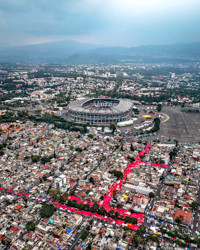
2024 © ᎳᎾᏒᏞᎠ ᎳᎪᏞᏦᎬᏒᏃ 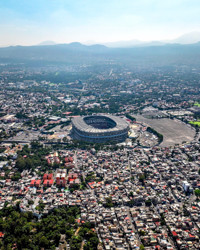
2024 © ᎳᎾᏒᏞᎠ ᎳᎪᏞᏦᎬᏒᏃ 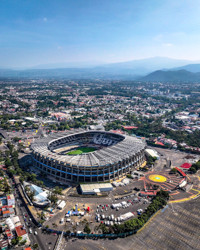
2024 © ᎳᎾᏒᏞᎠ ᎳᎪᏞᏦᎬᏒᏃ 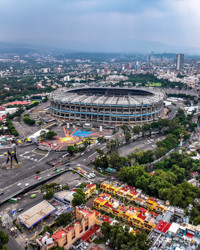
2024 © ᎳᎾᏒᏞᎠ ᎳᎪᏞᏦᎬᏒᏃ 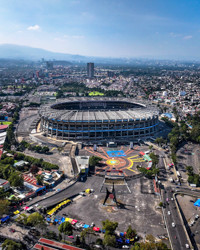
2024 © ᎳᎾᏒᏞᎠ ᎳᎪᏞᏦᎬᏒᏃ 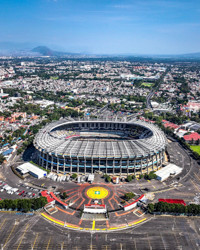
2024 © ᎳᎾᏒᏞᎠ ᎳᎪᏞᏦᎬᏒᏃ 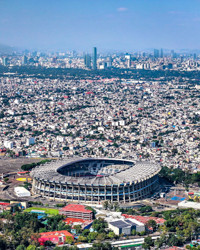
2024 © ᎳᎾᏒᏞᎠ ᎳᎪᏞᏦᎬᏒᏃ 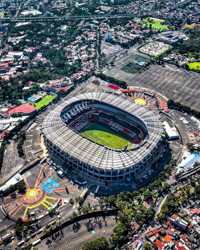
2024 © ᎳᎾᏒᏞᎠ ᎳᎪᏞᏦᎬᏒᏃ 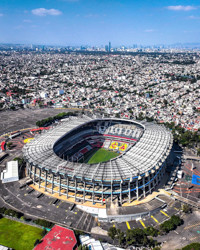
2024 © ᎳᎾᏒᏞᎠ ᎳᎪᏞᏦᎬᏒᏃ 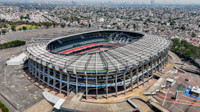
02.06.2024 © ProtoplasmaKid (CC BY-SA 4.0) 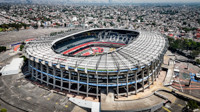
02.06.2024 © ProtoplasmaKid (CC BY-SA 4.0) 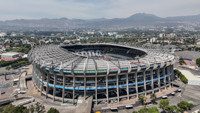
02.06.2024 © ProtoplasmaKid (CC BY-SA 4.0) 
07.2019 © @verticaldronemx 
10.2020 © @verticaldronemx 
10.2020 © @verticaldronemx 
29.10.2016 © Gobierno CDMX 
29.10.2016 © Gobierno CDMX 
29.10.2016 © Gobierno CDMX 
10.2020 © @verticaldronemx 
10.2020 © @verticaldronemx 
12.2019 © @verticaldronemx 
28.02.2014 © Stadiony.net 
28.02.2014 © Stadiony.net 
28.02.2014 © Stadiony.net 
28.02.2014 © Stadiony.net 
28.02.2014 © Stadiony.net 
28.02.2014 © Stadiony.net 
13.02.2018 © Frank Jasperneite 
13.02.2018 © Frank Jasperneite 
13.02.2018 © Frank Jasperneite 
28.02.2014 © Stadiony.net 
28.02.2014 © Stadiony.net 
28.02.2014 © Stadiony.net 
28.02.2014 © Stadiony.net 
28.02.2014 © Stadiony.net 
28.02.2014 © Stadiony.net 
28.02.2014 © Stadiony.net 
28.02.2014 © Stadiony.net 
28.02.2014 © Stadiony.net 
13.02.2018 © Frank Jasperneite 
13.02.2018 © Frank Jasperneite 
13.02.2018 © Frank Jasperneite 
13.02.2018 © Frank Jasperneite 
13.02.2018 © Frank Jasperneite 
13.02.2018 © Frank Jasperneite 
28.02.2014 © Stadiony.net 
28.02.2014 © Stadiony.net
Related news
2025
-
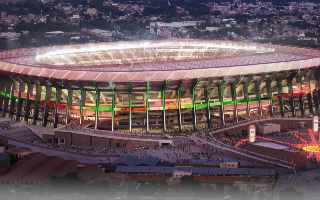
Mexico: Modernization of Estadio Azteca. Legendary stadium prepares for World Cup
The legendary Estadio Azteca is undergoing one of the most important renovations in its history. It is becoming increasingly clear that the iconic venue is preparing for a return to the global football stage, with progress attracting strong interest both in Mexico and abroad.
-
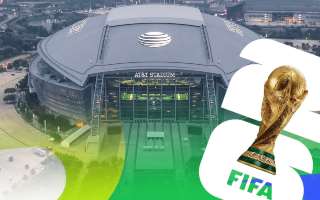
World Cup 2026: Key matches and stadiums for the biggest national teams
As the 2026 World Cup schedule takes shape, fans around the globe are eagerly planning the football journey of a lifetime. This could be the final chance to witness Messi and Ronaldo shine on the world’s biggest stage! Here’s where the top national teams will play, which stadiums will host their battles, and how to track ticket availability before it’s too late.
-
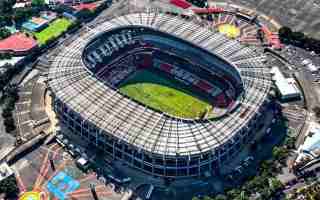
Mexico: Mexico begins major redevelopment around Estadio Azteca ahead of 2026 World Cup
Intensive renovation works have begun around the legendary Estadio Azteca. Under the supervision of Clara Brugada, a large-scale urban program called “Play Fair, Walk Fair” has been launched to modernize infrastructure in the southern part of the metropolis.
-
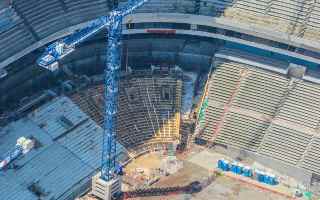
Mexico: Estadio Azteca is racing against time to be ready for World Cup
There are only eight months left until the start of the 2026 World Cup, but the legendary Estadio Azteca is still a construction site, bearing no resemblance to the spectacular visualizations. The complex renovation has accelerated in recent weeks, but time is running out.
-
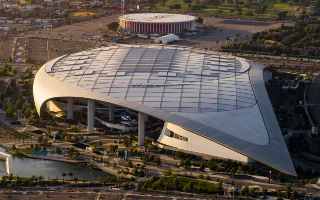
USA: World Cup 2026 under extreme heat as stadiums surpass safe limits
Ten of the 16 stadiums set to host the 2026 FIFA World Cup in the United States, Canada and Mexico currently exceed safe playing limits due to extreme temperatures, according to a report by Football for Future, Common Goal and Jupiter Intelligence.
-
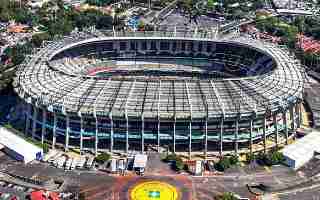
Mexico: 300 days to World Cup, Azteca still a construction site
It is set to become the first stadium in history to host three World Cups - provided the upgrade is finished in time. Meanwhile, exactly 300 days before the start of the World Cup, the iconic Estadio Azteca is being dug up and much of the stands dismantled. All indications are that the work has encountered delays.
-
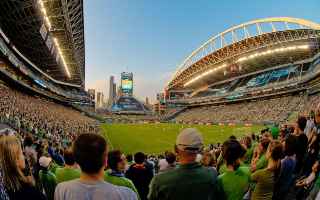
USA: One year to the 2026 World Cup! Did the Club World Cup test deliver?
A new format and a major dress rehearsal ahead of the 2026 World Cup. From political undertones and turbulent weather conditions to controversies over attendance and pitch quality – did the expanded edition of the Club World Cup live up to expectations?
-

WC 2026: Infantino shocked by… summer? Heatwave exposes FIFA unprepared
FIFA president Gianni Infantino announced that during the 2026 World Cup, to counter expected heat, matches scheduled for early hours will be played primarily in stadiums that are covered and air-conditioned.
-
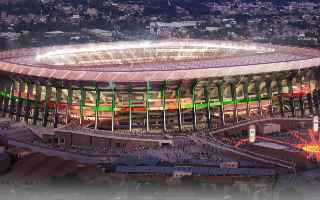
Mexico: New opening date for Estadio Azteca and further redevelopment plans
In 2026, Estadio Azteca will host the FIFA World Cup opener for the third time in history — a feat no other stadium in the world has achieved. To fulfill its role as host, the iconic venue is undergoing its most extensive renovation in decades.
-
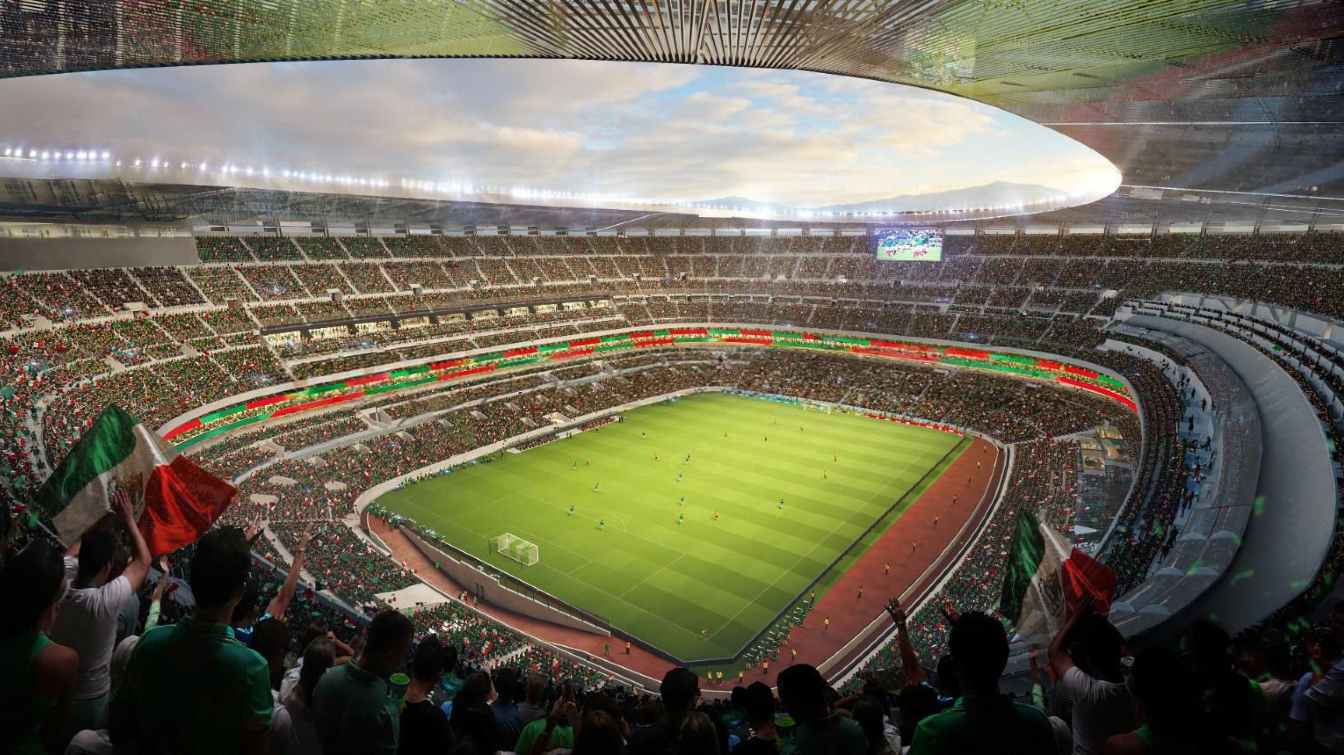
Mexico: New completion date for Estadio Azteca ahead of the World Cup
There’s now a little less than a year and a half to go until the world’s biggest football tournament kicks off. New information and renderings reveal what Estadio Azteca — or rather, Estadio Banorte — will look like once the renovation is complete.
-
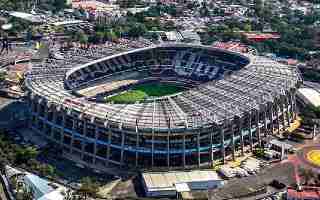
Mexico: Cruz Azul is looking for perfect location for its new stadium
Cruz Azul is actively searching for a new home. The club has long been evaluating various sites in and around Mexico City and the surrounding State of Mexico as potential locations for building a new stadium.
-
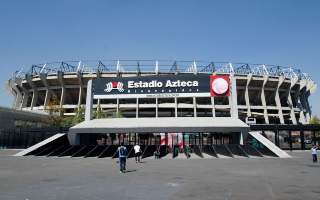
Mexico: FIFA accused of blocking labor inspection at Estadio Azteca
FIFA has been accused of violating its commitment to worker safety after allegedly denying inspectors access to review working conditions at Estadio Azteca, one of the stadiums set to host matches during the 2026 FIFA World Cup.
-
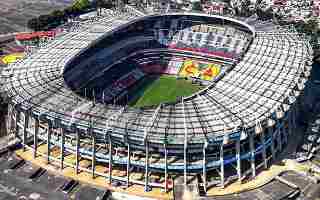
Mexico: Estadio Azteca changes its name to Estadio Banorte
According to an announcement made by Grupo Ollamani, as part of new commercial partnerships, Estadio Azteca will now be known as Estadio Banorte. This change is directly linked to the ongoing modernization of the venue, which began in mid-2024, aiming to prepare the stadium for the 2026 FIFA World Cup.
-
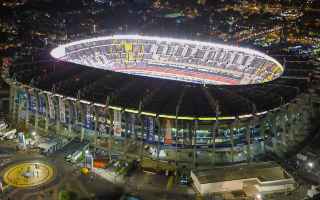
Mexico: Renovation cost of Estadio Azteca could reach $75 million
Estadio Azteca is undergoing renovations ahead of the 2026 FIFA World Cup. The stadium will host the opening ceremony of the tournament, which will take place next summer, and significant sums have been allocated for all renovation works.
-
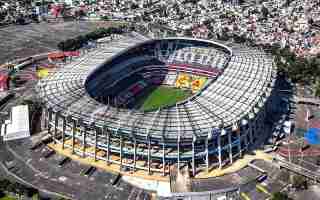
Mexico: Work continues at Estadio Azteca. Real Madrid at inauguration?
Renovation work at Estadio Azteca is progressing, and with less than 500 days left until the 2026 World Cup kicks off, new updates have emerged regarding the modernization of the Coloso de Santa Úrsula.
-
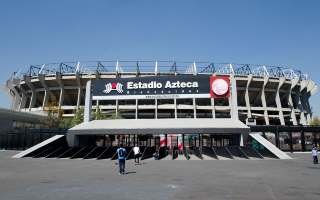
Mexico: 500 days to World Cup. How is Estadio Azteca preparing for tournament?
On January 27, the countdown will officially begin: exactly 500 days until the start of the FIFA World Cup, hosted by the United States, Mexico, and Canada. The opening match will take place at Estadio Azteca on June 11, 2026.
-
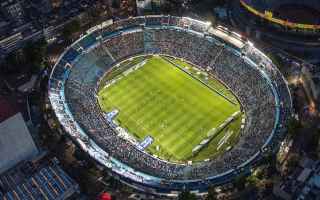
Mexico: Club America takes over Estadio Azul
Club America has been left alone at Estadio Ciudad de los Deportes. First Atlante and now Cruz Azul have fled the Benito Juarez district, but the Eagles have decided to stay at the controversy-shrouded facility and have already begun its "Americanization."
-
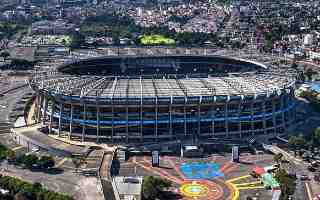
Mexico: Possible first-ever name change for Estadio Azteca
Estadio Azteca is undergoing a modernization process as part of preparations for the most important sporting event of 2026, the FIFA World Cup.
2024
-
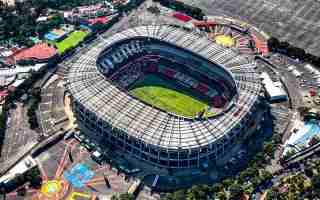
Mexico: América wants to reopen Estadio Azteca against a European giant
With the construction of Estadio Azteca progressing at a good pace, Club América is already looking for a rival to reopen the stadium and celebrate its anniversary against one of the best teams in Europe. It will be a busy year in CDMX, as the venue will host the World Cup in the summer and wants the NFL to return to the country.
-
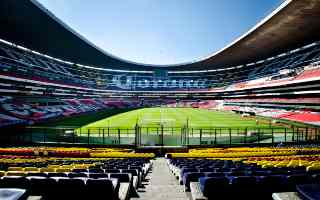
Mexico: América and Cruz Azul await return to Estadio Azteca – dates revealed
Club América already knows the estimated date of their return to the Coloso de Santa Úrsula, but for the moment they are finalizing the move for the Clausura 2025. Everything indicates that the Ciudad de los Deportes Stadium will remain empty, as Cruz Azul is also looking to move.

 StadiumDB
StadiumDB